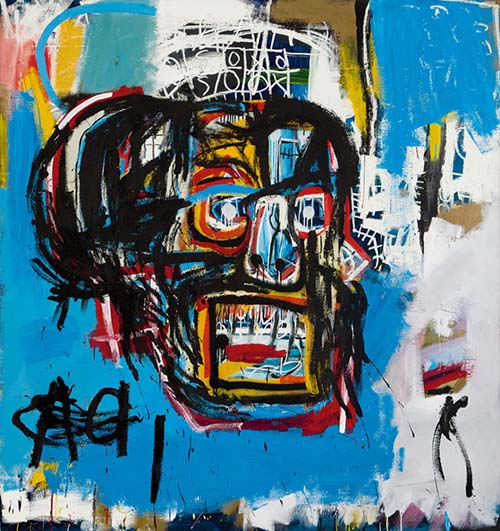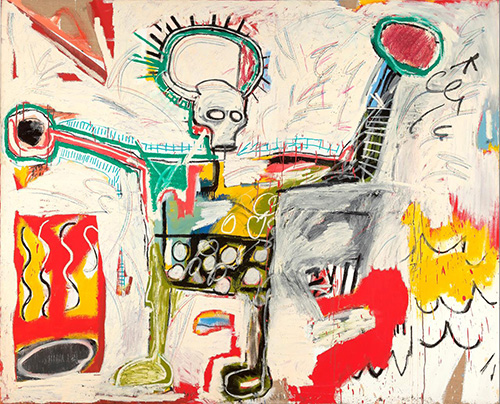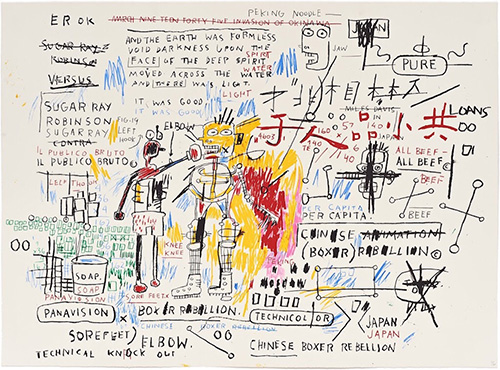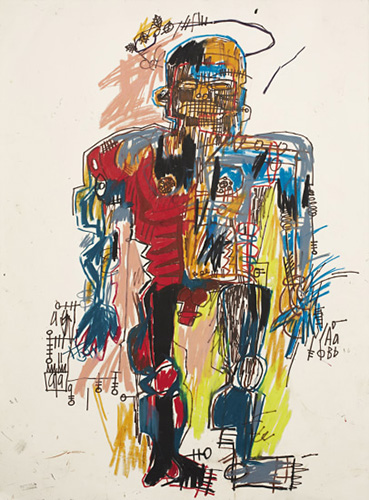
Jean-Michel Basquiat – the most expensive graphiti painter in the Contemporary Art history
ArtWizard, 10.06.2019
Jean-Michel Basquiat, the Brooklyn born painter, came out of the vibrant downtown New York scene of art in the late 1970s and became one of the most renowned and expensive graffiti artists of the late 20th century.
According to Sotheby’s return index, the average annual return for works of Basquiat that have been resold at auctions in 2017 and before that year, was 17%. More than 90% of his works increased in value in this period. In 2017 was the first record amount paid for a work by Basquiat, a USD 57.3 million purchase at an auction at Sotheby’s.
This was however quickly was made double by the Japanese billionaire Ysaku Maezawa, buying and Untitled work of Basquiat for USD 110 million and setting up a new record for the highest price ever paid at auction for a work of American artist. According to the Fortune Magazine and to CNN Money, Maezawa said that he intended to loan his newest possession out for exhibitions worldwide, and then make it the centrepiece of his art museum in Chiba, his hometown.
Basquiat mother encouraged his interest in art and fostered it by taking him to Manhattan to view various artworks. She enrolled him at the Brooklyn Museum of Art as a junior member, which exposed him to a multitude of artistic techniques, practices, and disciplines. She also encouraged and boosted his artistic ability by giving him the famous book, Gray’s Anatomy, during his month-long recovery from a car accident. His extravagant lifestyle included designer clothes and drugs. His drug habit grew along with his fame and income.
Basquiat never got a former art education, but began painting graphiti with some numerical and bright graphiti elements by himself, under the name SAMO. The artist never finished high school but developed an appreciation for art as a youth. His early work consisted of spray-painting buildings and trains in downtown New York alongside his friend Al Diaz, and buildings in Lower Manhattan. At the same period, he founded a rock band called “Grey” that performed along the night clubs of New York.
Basquiat had his first exposition in a group show at a vacant Times Square building and this eventually led to his first solo exhibition. A great success then followed with an acclaim by the art loving contemporary art public. His Street Art and Neo-Expressionist works on canvas and paper as well as on random objects and surfaces are characterized by visually striking and psychologically powerful combinations of anatomical diagrams, charged words and cryptic phrases, numerals, pictograms, commercial graphic art, allusions to African history and African-American pop culture, as well as stick figures and maps.
Basquiat’s paintings are the reason for elevating graphiti art into the realm of the New York gallery scene. He painted with graffiti spray crowns, often combined with scribbled words with pen or ink that referenced everything that he witnessed - from his Haitian and Puerto Rican heritage, to political issues, pop-culture icons, and Biblical verse.
By 1982, he was regularly showing his work, and had a long-time collaboration with the artist Andy Warhol. He worked on his paintings in USD 1'000 Armani suits, in which he would appear in public, spattered in paint.
In the 1980s Basciat collaborated a lot with other famous artists and had relationships with many famous people at the time like Madonna and David Bowe. The influence of his complex aesthetic on the next art loving generation remains unmeasurable. The artist was struggling with fame and drugs, and died of heroin overdose in the late 1980s at only 27 years.
Today, Basquiat's works are held in the collections of The Museum of Modern Art in New York, the Rubell Family Collection in Miami, and the Museum of Contemporary Art in Los Angeles, among others.
The expressive nature and gestural marks of his works aligned him not only to the street art works of Keith Haring and Kenny Scharf, but also to some of the Neo-Expressionists like Julian Schnabel and David Salle.






